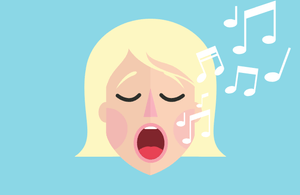
Our customer service teams are the front line for our businesses. They’re often the first (and nearly always the most important) influence on how our customers view us. How they talk is how our brand talks.
This means our tone of voice must be influenced by them, but they also need to be aware of how we want our brand to come across through our people. If we’re promising wholesome and delivering corporate, that’s a huge disconnect in the brand voice.
And that’s why customer service tone of voice training must not be neglected. It’s IMPERATIVE for a cohesive voice that’s recognisable and reliable.
A 6-step customer service tone of voice training plan
1. What is tone of voice?
Every brand has a voice – a way it talks to show its personality. But every voice has different tones.
You, as an individual, have your own way of expressing yourself, but you change the tone according to the setting. How you speak to your friends is different from how you speak to your doctor, and that is different from how you speak to your mum.
It’s the same for a brand. Marketing to a prospective customer requires a different tone from the one you use for resolving a complaint, but it’s all recognisable as our brand voice.
2. Why tone matters
We need to be recognisable by our voice and the customer needs to experience consistency at every touchpoint. Otherwise, it’d be like your doctor going from calm, soothing and professional to a shouty party monster jumping up on her desk. You’d be unsettled – and you wouldn’t trust her.
Every customer is a brand ambassador who WILL tell people if we mess up. And it can always spread: every conversation can be recorded or screenshot or just typed out. How we deliver difficult messages or address our customers’ problems can save us from a PR disaster. Customer service tone of voice helps us deliver on what our brand voice promises elsewhere.
3. How words build a voice
Look at these three words:
CHATTY
TRADITIONAL
LUXURIOUS
Now, look at the list of words below. Which of the three adjectives do they go with? Can we, as a group, sort them into three distinct feelings? Those words help build that voice.
Conventional Mate Sophisticated Fun Professional Respected Quirky Corporate Indulgence Renowned Sir Deluxe Thanks! Conservative Rich Bubbly Decadent Lovely Experienced Friendly Gorgeous Regards Distinguished Elegant Breezy Chirpy Sumptuous No problem You’re invited Exclusive
4. Your brand words and banned words
Pick the three words that describe your brand’s personality best. Like we did earlier, list words under each that get that across. They’re your brand words, and everyone in the business should be able to get close to what they should be.
Banned words are those your brand would never want to be associated with – like ‘spycam’ for an app-based home security system. Commonly used words with negative connotations you don’t want your customers to feel.
Banned words will also include jargon, which customer service teams often fall back on. We always want our customers to find our product or service super-easy – so it’s our jobs to make them seem that way. Jargon hides a lack of confidence with explaining complex things in simple terms but it can make a customer feel like we think we’re better than them.
Every industry has jargon and when we hear jargon from an area we don’t know well, it makes us feel stupid and excluded. To go back to your doctor, if she used all medical terms and didn’t explain them, you’d feel very frightened and confused. She tells you that you’ve got acute viral rhinopharyngitis – and you leave thinking you’d better make a will.
When really, that’s just medical jargon for the common cold.
5. When you have to switch tones
We talked up top about how we, as individuals, change our voice slightly depending on who we’re talking to. In business, we have to do that all the time: go from talking to one customer who thinks we’re the bee’s knees to a customer who’s levelling a formal complaint against us.
Examples of how we switch:
- Thanks! > Thank you > I really appreciate that
- No worries > You’re welcome
- Sorry about that > I’m really sorry that’s happened > I apologise for the situation
Try it with this phrase: “Thanks for the feedback”
How do we translate that when the feedback is slightly negative, and then again when it’s a complaint?
Customer service tone of voiced IS the brand
Our CS agents need to be tone of voice detectives, figuring out which tone a customer needs as quickly as possible. The right tone, the right words, and a negative can be relayed in a way that doesn’t escalate the situation – and saves the brand’s face to the customer. Tone of voice training makes it everyone’s business to live and breathe the brand.
Read up on how to get customer service teams understanding the brand.






